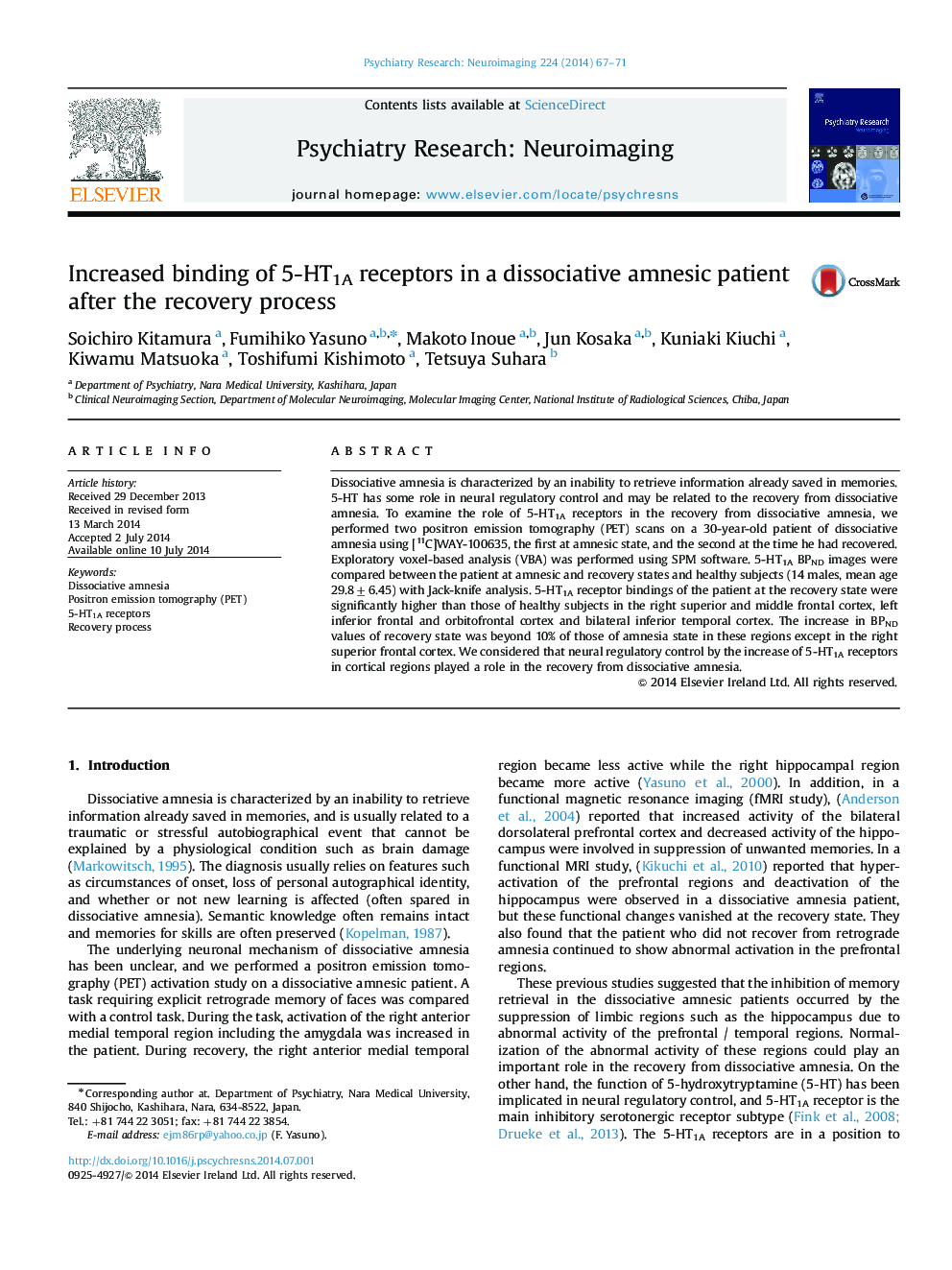| Article ID | Journal | Published Year | Pages | File Type |
|---|---|---|---|---|
| 335308 | Psychiatry Research: Neuroimaging | 2014 | 5 Pages |
Dissociative amnesia is characterized by an inability to retrieve information already saved in memories. 5-HT has some role in neural regulatory control and may be related to the recovery from dissociative amnesia. To examine the role of 5-HT1A receptors in the recovery from dissociative amnesia, we performed two positron emission tomography (PET) scans on a 30-year-old patient of dissociative amnesia using [11C]WAY-100635, the first at amnesic state, and the second at the time he had recovered. Exploratory voxel-based analysis (VBA) was performed using SPM software. 5-HT1A BPND images were compared between the patient at amnesic and recovery states and healthy subjects (14 males, mean age 29.8±6.45) with Jack-knife analysis. 5-HT1A receptor bindings of the patient at the recovery state were significantly higher than those of healthy subjects in the right superior and middle frontal cortex, left inferior frontal and orbitofrontal cortex and bilateral inferior temporal cortex. The increase in BPND values of recovery state was beyond 10% of those of amnesia state in these regions except in the right superior frontal cortex. We considered that neural regulatory control by the increase of 5-HT1A receptors in cortical regions played a role in the recovery from dissociative amnesia.
